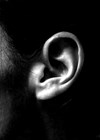Audiology features
Clinical utility and practical interpretation of the video head impulse test
The head impulse test (HIT) is an essential bedside test to detect peripheral vestibular deficits. The video head impulse test (vHIT) is a new tool quantifying the HIT. In this article Maria Heuberger and colleagues point out the clinical utility...
Using psychological behaviour change theory in vestibular practice
Fiona Barker explains the importance of recognising and understanding how habitual behaviours in vestibular patients can affect treatment outcomes, and how we as audiologists can support and encourage patients to modify these behaviours and perhaps address our own professional behaviours...
Vestibular rehabilitation therapy: diagnosis based strategies
In his second article on this topic (see here for the first article), Richard E Gans explains how to use vestibular rehabilitation therapy to treat vestibular patients, and demonstrates why this method of diagnosis based strategies has proved so successful....
Aetiology, investigation and acute management of sudden sensorineural hearing loss
The cause of a single sided sensorineural hearing loss has a wide variety of aetiologies. This review, by Edwin Halliday, looks specifically at the differential diagnostic causes of a sudden sensorineural hearing loss, the relevant investigations and the management should...
Audiological and psychological consequences of single-sided deafness
The loss of sound input from one ear has a significant impact on our perception of our acoustic environment. This impact is compounded in adverse listening conditions. Rachel Knappett’s article explores the audiological impact of this hearing loss and the...
Music and single-sided deafness: challenges and solutions
Music is an integral part of many of our lives, providing entertainment, relaxation and a backing track to our past experiences. In this overview, Gemma Crundwell and David Baguley examine the impact of SSD on the perception of music and...
Rehabilitation of unilateral sensorineural hearing loss: bone vs air conduction
The re-routing of sound from the deafened ear to the hearing ear has been the mainstay of rehabilitation for SSD for many years. Both hearing aid and bone conduction technology have undergone significant advances over the past decade. This article...
Rehabilitation of single-sided deafness with cochlear implants
The relatively recent emergence of cochlear implantation as a potential means of restoring hearing to a deafened ear, in the presence of normal hearing in the other ear, has proved an exciting and yet surprising development. James Tysome explores the...
A psychophysical perspective on single-sided deafness and its treatment by cochlear implants
Bob Carlyon gives us a psychophysical perspective on the hearing benefits that can and cannot be achieved for patients with single-sided deafness with a cochlear implant, and discusses some of the challenges in maximising the effectiveness of the treatment. He...
When patient choice stands in the way of patient-centredness
In the field of hearing care, there is increasing focus on ensuring patient autonomy and choice. Greater participation in decision making is supposed to result in better patient satisfaction. A study conducted in ENT and audiology clinics paradoxically suggests that...
Three is not a crowd! Involving family members in audiology appointments
Family members currently have minimal involvement in the appointment. Image by Caitlin Grenness. Hearing loss in older adults not only affects the patients themselves, but also their family members. This article outlines the findings of recent research into how family...
Integrating technology into audiological rehabilitation programmes
In the future, the rehabilitation of adults with hearing loss is likely to involve modern information technology. Using the Internet in the audiological rehabilitation process might be a cost-effective way to include additional rehabilitation components by guiding hearing aid users...

















